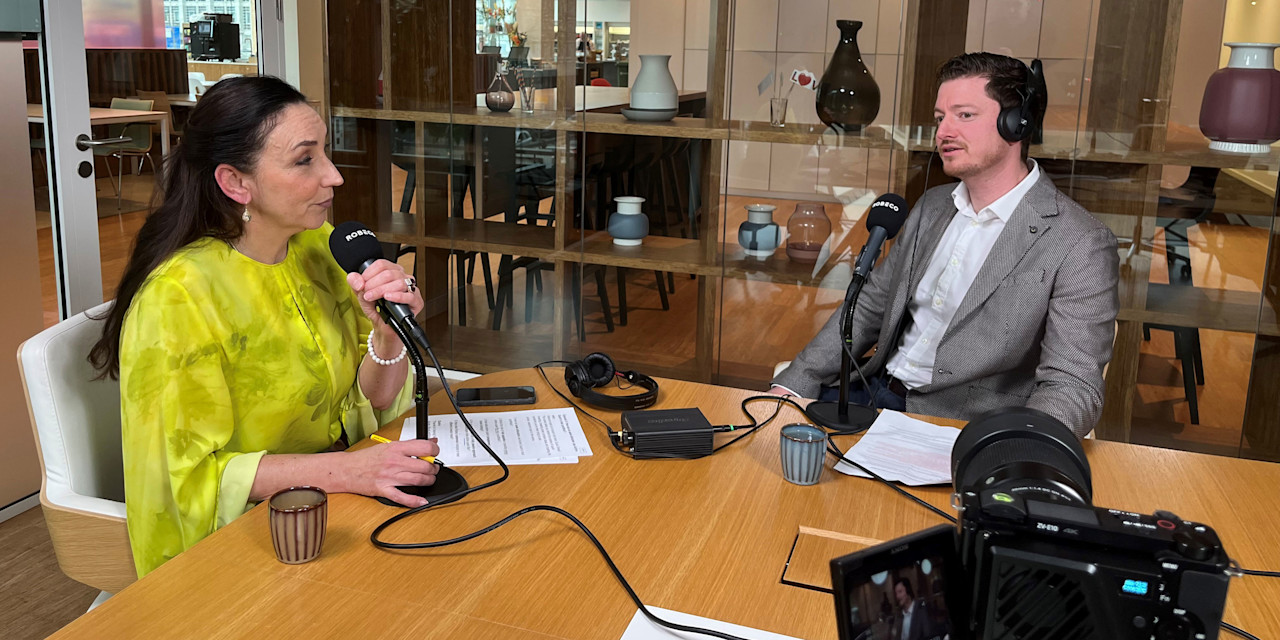

Fama-French 5-factor model: Why more is not always better
Fama and French expanded their well-known three-factor model by adding two new factors—investment and profitability—creating the Fama-French 5-factor model. But does this new model offer better stock return predictions or simply add complexity?
まとめ
- Adding two factors to the Fama-French 3-factor model has drawbacks
- Fama-French 5-factor model still ignores momentum and low volatility
- Addition of two quality factors premature
- Opinions on main implications are divided
Three Robeco experts on empirical asset pricing share their views on the Fama-French 5-factor model. While they acknowledge the significant contributions that Fama and French have made to asset pricing literature, they take a critical view of this expanded model.
Nobel laureates Eugene Fama and Kenneth French expanded their original 3-factor model in 20151 by adding two new factors: investment and profitability. The Fama-French 3-factor model, introduced in 19932, explained stock returns through three main factors: market risk, size and value.
Size effect: Stocks with smaller market capitalizations tend to earn higher returns than large-cap stocks, based on historical data.
Value effect: Stocks with low price-to-book ratios generally outperform those with high price-to-book ratios.
In their updated 5-factor model, Fama and French added:
Profitability factor: Stocks with high operating profitability tend to outperform.
Investment factor: Stocks from companies with high total asset growth tend to deliver below-average returns.
These two new factors are often referred to as quality factors in investing.
Criticisms of the Fama-French 5-factor model
We asked three Robeco experts, who recently published a research article on this topic in the Journal of Portfolio Management3, what they think of this new model. Pim van Vliet, Head of Conservative Equities and Chief Quant Strategist, David Blitz, Chief Researcher, and Matthias Hanauer, Researcher, discuss the implications.
Drawbacks of adding more factors
Pim van Vliet sees the addition of two more quality factors as a big change from the old model. ”If you exclude market risk, the new model effectively doubles the number of factors to four. All these factors interact, which makes it more difficult to summarize the cross section of stock returns.”
David Blitz is also critical about the way the empirical research is approached. “This approach can even be considered as a form of tautology, because they use five factors to explain the returns of those same five factors.”
“The two new factors (profitability and investment) are thus used to explain their own performance. I would prefer it if they showed that just a handful of factors can be used to explain the performance of the numerous factors found in the literature. They do this in the follow up paper, but it should form the basis for their study.”
The paper does fill a gap in the literature
Momentum and low volatility ignored
Van Vliet is more surprised by the factors they did not include. “The new model still ignores momentum, while this factor is widely accepted within academia and has been around for 20 years.”
They also omitted the low volatility factor, although for Blitz this is not such a big surprise. “There is a practical reason for excluding it, because it is not easy to combine with the market risk factor in the three factor model,” he says. “The market factor, which is similar to the beta factor of the capital asset pricing model, still assumes higher returns for higher risk, while a low-volatility factor would assume the opposite. An alternative approach would be to scrap the market factor altogether, but they did not choose this more radical step.”
Premature addition of quality factors
Blitz argues that Fama and French have been too quick to add the two factors. “The two new factors they have added are relatively recent discoveries and the research of these factors in different markets and time periods is still limited.”
Matthias Hanauer says a different definition of two factors related to quality might be more appropriate. “They have added the two factors but it is unclear why they have chosen these precise definitions, “he says. “In my opinion, the definition of gross profitability given by Robert Novy-Marx4 would have been a natural choice.”
Adding two factors is a big step, but in some way it is only a modest step, thinks Blitz. “In the AQR paper, ‘quality minus junk’, twenty underlying quality variables are used, only two of which are selected by Fama and French. Why select two instead of twenty? Why select those two particular variables? A lot of questions remain unanswered.” Don’t get me wrong, he adds. “I am not against these two extra variables, but why have they given them a special status by putting them in a model, while a range of other variables are available?”
According to Hanauer, the two quality factors contradict earlier findings by Fama and French. “In their 2008 paper, Dissecting Anomalies,5 they stated that the asset growth and profitability anomalies are less robust. However, in their 5-factor model they use exactly this same asset growth variable in their investment factor.
Opinions divided on main implications
The three experts are divided on what the main implications of the 5-factor model will be. Blitz suggests that Fama and French may have distanced themselves from their previously steadfast belief in efficient markets, where the relation between risk and return is linear and positive.
“The three factor model still fitted this belief, because they saw size and value as risk factors, just like market risk in the capital asset pricing model. But now they don’t even bother to explain how the two new quality factors fit into their old framework, or whether there are behavioral explanations for these factors.”
Hanauer does see a bright side to the new model. “Despite all the criticism, the paper does fill a gap in the literature on these two quality factors.” Van Vliet says that Fama and French did a great job with their original 1993 model in reducing the number of factors that were proposed in various different papers in the 1980s. “And now they added two more. These additional factors will give quite some food for thought the coming years.”5
And for more information, read our related insights:
Footnotes
[1] Fama, E., and K. French. “A Five-Factor Asset Pricing Model.” Journal of Financial Economics, 116 (2015), pp. 1-22.
[2] Fama, E., and K. French. “Common Risk Factors in the Returns on Stocks and Bonds.” Journal of Financial Economics, 33 (1993), pp. 3 à 56.
[3] https://www.pm-research.com/content/iijpormgmt/44/4/71
[4] Novy-Marx, R. “The Other Side of Value: The Gross Profitability Premium.” Journal of Financial Economics 108(1), 2013, 1-28
[5] Fama, E., and K. French. “Dissecting Anomalies.” Journal of Finance, (August 2008), pp. 1653-1678. Working Paper (June 2007) available at SSRN
クオンツ運用の価値を探求
最先端クオンツ戦略の情報やインサイトを定期的にお届けします。
重要事項
当資料は情報提供を目的として、Robeco Institutional Asset Management B.V.が作成した英文資料、もしくはその英文資料をロベコ・ジャパン株式会社が翻訳したものです。資料中の個別の金融商品の売買の勧誘や推奨等を目的とするものではありません。記載された情報は十分信頼できるものであると考えておりますが、その正確性、完全性を保証するものではありません。意見や見通しはあくまで作成日における弊社の判断に基づくものであり、今後予告なしに変更されることがあります。運用状況、市場動向、意見等は、過去の一時点あるいは過去の一定期間についてのものであり、過去の実績は将来の運用成果を保証または示唆するものではありません。また、記載された投資方針・戦略等は全ての投資家の皆様に適合するとは限りません。当資料は法律、税務、会計面での助言の提供を意図するものではありません。 ご契約に際しては、必要に応じ専門家にご相談の上、最終的なご判断はお客様ご自身でなさるようお願い致します。 運用を行う資産の評価額は、組入有価証券等の価格、金融市場の相場や金利等の変動、及び組入有価証券の発行体の財務状況による信用力等の影響を受けて変動します。また、外貨建資産に投資する場合は為替変動の影響も受けます。運用によって生じた損益は、全て投資家の皆様に帰属します。したがって投資元本や一定の運用成果が保証されているものではなく、投資元本を上回る損失を被ることがあります。弊社が行う金融商品取引業に係る手数料または報酬は、締結される契約の種類や契約資産額により異なるため、当資料において記載せず別途ご提示させて頂く場合があります。具体的な手数料または報酬の金額・計算方法につきましては弊社担当者へお問合せください。 当資料及び記載されている情報、商品に関する権利は弊社に帰属します。したがって、弊社の書面による同意なくしてその全部もしくは一部を複製またはその他の方法で配布することはご遠慮ください。 商号等: ロベコ・ジャパン株式会社 金融商品取引業者 関東財務局長(金商)第2780号 加入協会: 一般社団法人 日本投資顧問業協会




























